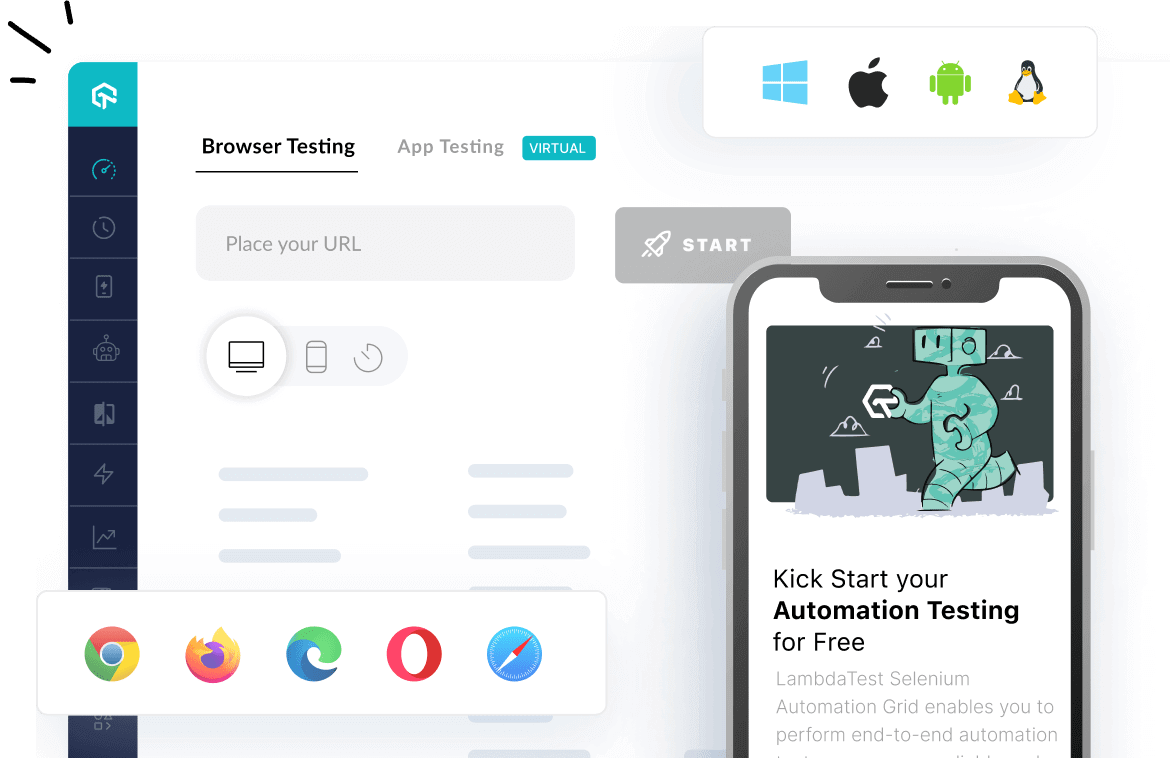How to use AzureMessageReceiver method of Microsoft.Coyote.Samples.CloudMessaging.AzureMessageReceiver class
Best Coyote code snippet using Microsoft.Coyote.Samples.CloudMessaging.AzureMessageReceiver.AzureMessageReceiver
Program.cs
Source:Program.cs
...172 private async Task RunClient(IActorRuntime runtime, ActorId clusterManager, string subscriptionName)173 {174 CancellationTokenSource cancelSource = new CancellationTokenSource();175 StartRaftServers(this.ConnectionString, this.TopicName, this.ClusterSize);176 var receiver = new AzureMessageReceiver(runtime, this.ConnectionString, this.TopicName, this.LocalId, subscriptionName);177 var nowait = receiver.RunAsync(cancelSource.Token);178 receiver.ResponseReceived += (s, e) =>179 {180 this.completed.SetResult(e);181 };182 // Now send the requested number of ClientRequestEvents to the cluster, and wait for each response.183 for (int i = 0; i < this.NumRequests; i++)184 {185 string command = $"request-{i}";186 Console.WriteLine($"<Client> sending {command}.");187 this.completed = new TaskCompletionSource<ClientResponseEvent>();188 runtime.SendEvent(clusterManager, new ClientRequestEvent(command));189 var response = await this.completed.Task;190 Console.WriteLine($"<Client> received response for {response.Command} from {response.Server}.");191 }192 }193 private async Task RunServer(IActorRuntime runtime, ActorId clusterManager, string subscriptionName)194 {195 if (this.Debug)196 {197 Console.WriteLine("Attach debugger");198 await Task.Delay(60000);199 }200 CancellationTokenSource cancelSource = new CancellationTokenSource();201 if (this.ClientProcessId == 0)202 {203 throw new Exception("Server should have a client process id");204 }205 MonitorClientProcess(this.ClientProcessId);206 // We create a server host that will create and wrap a Raft server instance (implemented207 // as a Coyote state machine), and execute it using the Coyote runtime.208 var host = new AzureServer(runtime, this.ConnectionString, this.TopicName, this.ServerId, this.ClusterSize, clusterManager);209 this.LocalId = host.HostedServer;210 host.Initialize();211 host.Start();212 var receiver = new AzureMessageReceiver(runtime, this.ConnectionString, this.TopicName, this.LocalId, subscriptionName);213 await receiver.RunAsync(cancelSource.Token);214 }215 /// <summary>216 /// Callback that is invoked when an unhandled exception is thrown in the Coyote runtime.217 /// </summary>218 private static void RuntimeOnFailure(Exception ex)219 {220 int processId = Process.GetCurrentProcess().Id;221 Console.WriteLine($"Server process with id {processId} failed with exception:");222 Console.WriteLine(ex);223 Environment.Exit(1);224 }225 #region infrastructure code226 private static void StartRaftServers(string connectionString, string topicName, int size)...AzureMessageReceiver.cs
Source:AzureMessageReceiver.cs
...13{14 /// <summary>15 /// This class receives messages from Azure Service Bus and pumps them into the Coyote runtime.16 /// </summary>17 internal class AzureMessageReceiver18 {19 /// <summary>20 /// The receiver for receiving messages from the topic.21 /// </summary>22 public IMessageReceiver SubscriptionReceiver;23 /// <summary>24 /// Id of the local actor that owns this cluster manager.25 /// </summary>26 private readonly ActorId LocalActorId;27 /// <summary>28 /// The name of the local actor.29 /// </summary>30 private readonly string LocalActorName;31 /// <summary>32 /// The Coyote runtime.33 /// </summary>34 private readonly IActorRuntime ActorRuntime;35 /// <summary>36 /// This event is raised when the cluster receives a ClientResponseEvent37 /// </summary>38 public event EventHandler<ClientResponseEvent> ResponseReceived;39 public AzureMessageReceiver(IActorRuntime runtime, string connectionString, string topicName, ActorId actorId, string subscriptionName)40 {41 this.ActorRuntime = runtime;42 this.LocalActorId = actorId;43 this.LocalActorName = (actorId == null) ? "Client" : actorId.Name;44 this.SubscriptionReceiver = new MessageReceiver(connectionString,45 EntityNameHelper.FormatSubscriptionPath(topicName, subscriptionName),46 ReceiveMode.ReceiveAndDelete);47 }48 public async Task RunAsync(CancellationToken cancellationToken)49 {50 await this.ReceiveMessagesAsync(cancellationToken);51 }52 /// <summary>53 /// Handle the receiving of messages from the Azure Message Bus...AzureMessageReceiver
Using AI Code Generation
1using Microsoft.Coyote.Samples.CloudMessaging;2using System;3using System.Threading.Tasks;4{5 {6 static void Main(string[] args)7 {8 Console.WriteLine("Hello World!");9 AzureMessageReceiver azureMessageReceiver = new AzureMessageReceiver();10 azureMessageReceiver.ReceiveMessages();11 Console.ReadLine();12 }13 }14}15using Microsoft.Coyote.Samples.CloudMessaging;16using System;17using System.Threading.Tasks;18{19 {20 static void Main(string[] args)21 {22 Console.WriteLine("Hello World!");23 AzureMessageSender azureMessageSender = new AzureMessageSender();24 azureMessageSender.SendMessage();25 Console.ReadLine();26 }27 }28}29using Microsoft.Coyote.Samples.CloudMessaging;30using System;31using System.Threading.Tasks;32{33 {34 static void Main(string[] args)35 {36 Console.WriteLine("Hello World!");37 AzureQueueStorage azureQueueStorage = new AzureQueueStorage();38 azureQueueStorage.EnqueueMessage();39 Console.ReadLine();40 }41 }42}43using Microsoft.Coyote.Samples.CloudMessaging;44using System;45using System.Threading.Tasks;46{47 {48 static void Main(string[] args)49 {50 Console.WriteLine("Hello World!");51 AzureQueueStorage azureQueueStorage = new AzureQueueStorage();52 azureQueueStorage.DequeueMessage();53 Console.ReadLine();54 }55 }56}57using Microsoft.Coyote.Samples.CloudMessaging;58using System;59using System.Threading.Tasks;60{61 {62 static void Main(string[] args)63 {64 Console.WriteLine("Hello World!");65 AzureQueueStorage azureQueueStorage = new AzureQueueStorage();66 azureQueueStorage.PeekMessage();67 Console.ReadLine();68 }69 }70}AzureMessageReceiver
Using AI Code Generation
1var receiver = new AzureMessageReceiver();2receiver.ReceiveMessageAsync().Wait();3var sender = new AzureMessageSender();4sender.SendMessageAsync().Wait();5var receiver = new AzureMessageReceiver();6receiver.ReceiveMessageAsync().Wait();7var sender = new AzureMessageSender();8sender.SendMessageAsync().Wait();9var receiver = new AzureMessageReceiver();10receiver.ReceiveMessageAsync().Wait();11var sender = new AzureMessageSender();12sender.SendMessageAsync().Wait();13var receiver = new AzureMessageReceiver();14receiver.ReceiveMessageAsync().Wait();15var sender = new AzureMessageSender();16sender.SendMessageAsync().Wait();17var receiver = new AzureMessageReceiver();18receiver.ReceiveMessageAsync().Wait();19var sender = new AzureMessageSender();20sender.SendMessageAsync().Wait();21var receiver = new AzureMessageReceiver();22receiver.ReceiveMessageAsync().Wait();23var sender = new AzureMessageSender();24sender.SendMessageAsync().Wait();AzureMessageReceiver
Using AI Code Generation
1using System;2using System.Threading.Tasks;3using Microsoft.Coyote.Samples.CloudMessaging;4{5 {6 static async Task Main(string[] args)7 {AzureMessageReceiver
Using AI Code Generation
1using Microsoft.Coyote.Samples.CloudMessaging;2using System;3using System.Collections.Generic;4using System.Linq;5using System.Text;6using System.Threading.Tasks;7using Microsoft.Coyote;8using Microsoft.Coyote.Tasks;9using Microsoft.Coyote.Actors;10using Microsoft.Coyote.Actors.Timers;11using Microsoft.Coyote.Actors.SharedObjects;12using Microsoft.Coyote.Actors.SharedObjects.SharedDictionary;13using Microsoft.Coyote.Actors.SharedObjects.SharedQueue;14using Microsoft.Coyote.Actors.SharedObjects.SharedStack;15using Microsoft.Coyote.Actors.SharedObjects.SharedHashSet;16using Microsoft.Coyote.Actors.SharedObjects.SharedLog;17using Microsoft.Coyote.Actors.SharedObjects.SharedCounter;18using Microsoft.Coyote.Actors.SharedObjects.SharedChannel;19using Microsoft.Coyote.Actors.SharedObjects.SharedMemory;20using Microsoft.Coyote.Actors.SharedObjects.SharedLifo;21using Microsoft.Coyote.Actors.SharedObjects.SharedRandom;22using Microsoft.Coyote.Actors.SharedObjects.SharedBinaryHeap;23using Microsoft.Coyote.Actors.SharedObjects.SharedBinaryTree;24using Microsoft.Coyote.Actors.SharedObjects.SharedList;25using Microsoft.Coyote.Actors.SharedObjects.SharedPriorityQueue;26using Microsoft.Coyote.Actors.SharedObjects.SharedSemaphore;27using Microsoft.Coyote.Actors.SharedObjects.SharedTable;28using Microsoft.Coyote.Actors.SharedObjects.SharedWaitQueue;29using Microsoft.Coyote.Actors.SharedObjects.SharedWaitStack;30using Microsoft.Coyote.Actors.SharedObjects.SharedWaitChannel;31using Microsoft.Coyote.Actors.SharedObjects.SharedWaitCounter;32using Microsoft.Coyote.Actors.SharedObjects.SharedWaitLifo;33using Microsoft.Coyote.Actors.SharedObjects.SharedWaitLog;34using Microsoft.Coyote.Actors.SharedObjects.SharedWaitQueue;35using Microsoft.Coyote.Actors.SharedObjects.SharedWaitStack;36using Microsoft.Coyote.Actors.SharedObjects.SharedWaitChannel;37using Microsoft.Coyote.Actors.SharedObjects.SharedWaitCounter;38using Microsoft.Coyote.Actors.SharedObjects.SharedWaitLifo;39using Microsoft.Coyote.Actors.SharedObjects.SharedWaitLog;40using Microsoft.Coyote.Actors.SharedObjects.SharedWaitQueue;41using Microsoft.Coyote.Actors.SharedObjects.SharedWaitStack;42using Microsoft.Coyote.Actors.SharedObjects.SharedWaitChannel;43using Microsoft.Coyote.Actors.SharedObjects.SharedWaitCounter;Automation Testing Tutorials
Learn to execute automation testing from scratch with LambdaTest Learning Hub. Right from setting up the prerequisites to run your first automation test, to following best practices and diving deeper into advanced test scenarios. LambdaTest Learning Hubs compile a list of step-by-step guides to help you be proficient with different test automation frameworks i.e. Selenium, Cypress, TestNG etc.
LambdaTest Learning Hubs:
- JUnit Tutorial
- TestNG Tutorial
- Webdriver Tutorial
- WebDriverIO Tutorial
- Protractor Tutorial
- Selenium 4 Tutorial
- Jenkins Tutorial
- NUnit Tutorial
- Jest Tutorial
- Playwright Tutorial
- Cypress Tutorial
- PyTest Tutorial
YouTube
You could also refer to video tutorials over LambdaTest YouTube channel to get step by step demonstration from industry experts.
Try LambdaTest Now !!
Get 100 minutes of automation test minutes FREE!!

